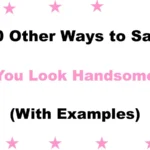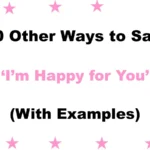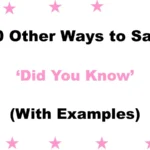Making a real connection is more than just saying the usual phrase—it’s about choosing words that carry warmth, thought, and intention. Whether you’re messaging someone new on LinkedIn, emailing a client, or chatting with a collaborator, these alternative phrases can make your greeting feel more memorable, professional, and personal. Here’s a list of 30 carefully curated alternatives that add a touch of meaning to your first impression.
What Does “Nice to Connect With You” Mean?
“Nice to connect with you” is a friendly and polite phrase used to acknowledge the beginning of a new relationship—whether personal, professional, or casual. It expresses a positive sentiment about meeting or speaking with someone for the first time, often during introductions via email, LinkedIn, Zoom, or in person.
The phrase implies that you’re open to further interaction and appreciate the opportunity to engage. It’s warm, respectful, and sets a courteous tone for future communication, making it especially popular in networking and business environments where first impressions matter.
When to Use “Nice to Connect With You”
Use it when:
- Reaching out on LinkedIn – Makes the conversation feel professional and courteous
- Beginning an email – Helps set a positive tone from the start
- Meeting someone new at events – Shows you’re approachable and pleasant
Is It Professional/Polite to Say “Nice to Connect With You”
Yes, “Nice to connect with you” is both professional and polite—making it a reliable phrase for networking, email introductions, and virtual meetings. It strikes the right balance between friendliness and respect, making it suitable across industries and formalities. While it’s a perfectly acceptable greeting, it can sometimes feel overused or impersonal, especially in highly competitive or connection-heavy environments like LinkedIn.
That’s why exploring alternative ways to say it can help you stand out and express yourself with more authenticity. Whether you’re writing to a potential client, a recruiter, or a new team member, finding the right words can set a warm and respectful tone from the very beginning.
Pros or Cons of Saying “Nice to Connect With You”
Pros:
- Polite and warm – Makes people feel welcomed
- Universally understood – Works in both formal and informal settings
- Non-intrusive – A safe, respectful opening
Cons:
- Overused – Can feel generic or impersonal if used too often
- Lacks depth – Doesn’t always reflect real sentiment
- May seem passive – Could be forgettable in highly competitive spaces
Synonyms for “Nice to Connect With You”
- Great to connect with you
- It’s a pleasure meeting you
- Glad we’re in touch
- Happy to be connected
- Wonderful to meet you
- Grateful for this connection
- Excited to work together
- Lovely connecting with you
- Awesome to meet you
- Happy to link up
- Looking forward to learning more about you
- Delighted to connect
- So nice crossing paths
- Thankful for this introduction
- Great meeting you virtually
- Happy to make your acquaintance
- It’s good to meet you
- So glad we met
- Enjoyed our conversation
- Appreciate the connection
- Honored to connect with you
- Great chatting with you
- Inspired by your profile
- Looking forward to future conversations
- Nice having this exchange
- Thankful to connect
- Good to be in touch
- A pleasure to engage with you
- Enjoying our connection already
- Let’s keep the conversation going
1. Great to connect with you
Definition: A direct and warm way to acknowledge the new connection
Explanation: Slightly more enthusiastic than the original phrase
Scenario Example: “Great to connect with you here on LinkedIn—your recent project was inspiring.”
Best Use: Business networking, online platforms
Worst Use: First-time meetings in ultra-formal environments
Tone: Friendly, confident
2. It’s a pleasure meeting you
Definition: Shows courtesy and appreciation for the interaction
Explanation: Feels polished, perfect for first impressions
Scenario Example: “It’s a pleasure meeting you at the seminar today.”
Best Use: In-person networking, professional events
Worst Use: Casual online messages
Tone: Courteous, professional
3. Glad we’re in touch
Definition: Expresses appreciation for staying connected
Explanation: Feels natural and conversational
Scenario Example: “Glad we’re in touch! Looking forward to collaborating.”
Best Use: After a mutual introduction or accepted request
Worst Use: When needing a formal, structured tone
Tone: Relaxed, friendly
4. Happy to be connected
Definition: Simple and polite expression of new contact
Explanation: Works in most communication settings
Scenario Example: “Happy to be connected—thanks for reaching out!”
Best Use: Initial LinkedIn messages, casual intros
Worst Use: Very formal emails
Tone: Neutral, welcoming
5. Wonderful to meet you
Definition: A slightly elevated version of “Nice to meet you”
Explanation: Carries warmth and respect
Scenario Example: “Wonderful to meet you yesterday. Loved our chat about innovation.”
Best Use: In-person or Zoom calls
Worst Use: Cold outreach emails
Tone: Warm, appreciative
6. Grateful for this connection
Definition: Emphasizes appreciation
Explanation: Signals thoughtfulness and humility
Scenario Example: “Grateful for this connection—your insights are refreshing.”
Best Use: After receiving help, advice, or feedback
Worst Use: Very casual or brief messages
Tone: Sincere, thankful
7. Excited to work together
Definition: Expresses anticipation for collaboration
Explanation: Communicates purpose and engagement
Scenario Example: “Excited to work together on the campaign!”
Best Use: Project kickoff, introductions
Worst Use: When no working relationship is defined yet
Tone: Energetic, goal-oriented
8. Lovely connecting with you
Definition: A warm, semi-formal way to show enjoyment
Explanation: Slightly more expressive and upbeat
Scenario Example: “Lovely connecting with you during the panel today!”
Best Use: Conferences, creative industries
Worst Use: Executive-level communication
Tone: Friendly, light
9. Awesome to meet you
Definition: Casual and enthusiastic greeting
Explanation: Great for informal or social-first settings
Scenario Example: “Awesome to meet you at the startup mixer!”
Best Use: Startup events, community chats
Worst Use: Corporate emails
Tone: Informal, excited
10. Happy to link up
Definition: Urban or tech-friendly way of saying “connect”
Explanation: Informal, often used in digital networking
Scenario Example: “Happy to link up—your podcast rocks!”
Best Use: Creative industries, tech networking
Worst Use: Formal settings
Tone: Cool, relaxed
11. Looking forward to learning more about you
Definition: Shows genuine curiosity and interest in the other person
Explanation: Ideal for deeper conversations and ongoing engagement
Scenario Example: “Looking forward to learning more about your journey in sustainability.”
Best Use: After an initial intro or first chat
Worst Use: When no relationship has been established yet
Tone: Thoughtful, inquisitive
12. Delighted to connect
Definition: Stronger, more expressive version of the original phrase
Explanation: Suitable for people you admire or want to impress
Scenario Example: “Delighted to connect—your recent talk was truly impactful.”
Best Use: Speaking to senior professionals or admired figures
Worst Use: Casual conversations or group messages
Tone: Respectful, gracious
13. So nice crossing paths
Definition: Reflects positivity in an unexpected or brief meeting
Explanation: Feels serendipitous and kind
Scenario Example: “So nice crossing paths at the coffee break today.”
Best Use: In-person events, chance encounters
Worst Use: Business introductions via email
Tone: Warm, friendly
14. Thankful for this introduction
Definition: Acknowledges someone who made the connection happen
Explanation: Adds gratitude and formality
Scenario Example: “Thankful for this introduction—appreciate Sarah connecting us.”
Best Use: When someone referred or introduced you
Worst Use: When no third party is involved
Tone: Grateful, formal
15. Great meeting you virtually
Definition: Notes the modern context of online meetings
Explanation: Keeps things casual but thoughtful
Scenario Example: “Great meeting you virtually—hope to connect in person soon.”
Best Use: Zoom calls, webinars, online interviews
Worst Use: Physical meetings
Tone: Polite, adaptable
16. Happy to make your acquaintance
Definition: Old-fashioned yet still professional
Explanation: Adds a touch of formality and class
Scenario Example: “Happy to make your acquaintance. I’ve heard great things.”
Best Use: Formal emails, classic corporate settings
Worst Use: Modern digital-first platforms
Tone: Formal, respectful
17. It’s good to meet you
Definition: A casual and honest way of saying hello
Explanation: Works across different situations without sounding robotic
Scenario Example: “It’s good to meet you—I’ve been following your work for a while.”
Best Use: Networking events, digital intros
Worst Use: Highly scripted conversations
Tone: Genuine, balanced
18. So glad we met
Definition: Personal and heartwarming
Explanation: Reflects appreciation of a meaningful interaction
Scenario Example: “So glad we met during the retreat—it was refreshing talking to you.”
Best Use: In-person or follow-up messages
Worst Use: Cold outreach
Tone: Warm, emotional
19. Enjoyed our conversation
Definition: Focuses on the quality of interaction
Explanation: Emphasizes the value of the chat rather than the connection
Scenario Example: “Enjoyed our conversation—thanks for the insights on branding.”
Best Use: After a productive or inspiring discussion
Worst Use: Without any actual conversation
Tone: Grateful, thoughtful
20. Appreciate the connection
Definition: Simple, straightforward acknowledgment
Explanation: Polite and professional for ongoing relationships
Scenario Example: “Appreciate the connection—your message made my day.”
Best Use: Emails, digital platforms
Worst Use: Repeated too often without context
Tone: Respectful, neutral
21. Honored to connect with you
Definition: A formal and respectful phrase
Explanation: Ideal for senior professionals or role models
Scenario Example: “Honored to connect with you—your work in law is admirable.”
Best Use: High-level networking
Worst Use: Casual exchanges
Tone: Formal, respectful
22. Great chatting with you
Definition: Highlights conversation over formality
Explanation: Shows genuine engagement and interaction
Scenario Example: “Great chatting with you on the panel—let’s stay in touch.”
Best Use: After calls, informal events
Worst Use: Introductory messages
Tone: Relaxed, personable
23. Inspired by your profile
Definition: Compliment that starts a conversation
Explanation: Opens the door to meaningful dialogue
Scenario Example: “Inspired by your profile—especially your startup journey.”
Best Use: LinkedIn or portfolio introductions
Worst Use: Without reading the profile
Tone: Admiring, interested
24. Looking forward to future conversations
Definition: Shows intent for continued engagement
Explanation: Encourages ongoing communication
Scenario Example: “Looking forward to future conversations on sustainability and impact.”
Best Use: Thought leadership, ongoing dialogue
Worst Use: No follow-up planned
Tone: Curious, open
25. Nice having this exchange
Definition: Acknowledges a brief but positive interaction
Explanation: Good for short, friendly conversations
Scenario Example: “Nice having this exchange—thanks for the quick insights!”
Best Use: Emails, DMs, informal chats
Worst Use: Long-term collaborations
Tone: Brief, light
26. Thankful to connect
Definition: Combines appreciation and formality
Explanation: Useful in serious or impactful connections
Scenario Example: “Thankful to connect—your nonprofit story moved me.”
Best Use: Purpose-driven communication
Worst Use: Highly casual chats
Tone: Sincere, appreciative
27. Good to be in touch
Definition: Friendly and ongoing
Explanation: Suggests continuity and openness
Scenario Example: “Good to be in touch—let me know how I can support you.”
Best Use: Reconnecting, team introductions
Worst Use: Formal first messages
Tone: Warm, cooperative
28. A pleasure to engage with you
Definition: Signals respect for the interaction
Explanation: Blends professionalism with friendliness
Scenario Example: “A pleasure to engage with you on today’s forum.”
Best Use: Events, forums, panels
Worst Use: Generic LinkedIn notes
Tone: Balanced, polished
29. Enjoying our connection already
Definition: Emphasizes a positive early impression
Explanation: Builds enthusiasm and rapport
Scenario Example: “Enjoying our connection already—looking forward to more chats.”
Best Use: Social-first platforms, casual conversations
Worst Use: Corporate communication
Tone: Fun, lighthearted
30. Let’s keep the conversation going
Definition: Encourages ongoing interaction
Explanation: Keeps momentum in the relationship
Scenario Example: “Let’s keep the conversation going—would love to explore this more.”
Best Use: After a promising first talk
Worst Use: One-time interactions with no future plan
Tone: Forward-looking, engaging
Conclusion
Finding new ways to say “Nice to Connect With You” adds depth, warmth, and clarity to your conversations. Whether you’re networking, collaborating, or simply building relationships, using intentional language creates stronger human connections.
These 30 alternatives help express everything from professional respect to genuine admiration, making your messages more memorable and meaningful. Choose one that reflects your voice—and let your words do the connecting.
Frequently Asked Questions (FAQs)
1. Is it OK to use different phrases instead of “Nice to Connect With You”?
Yes, using alternatives adds variety and often sounds more personal or aligned with the tone of your message.
2. Are these alternatives suitable for professional emails?
Most of them are. Some are more casual (like “Awesome to meet you”), while others are ideal for formal emails (like “Delighted to connect”).
3. How do I choose the best alternative?
Match the tone to the situation. If it’s a job interview follow-up, go formal. If it’s a friendly network intro, go conversational.
4. Will using unique phrases help me stand out?
Absolutely. It shows thoughtfulness and helps your message rise above generic intros in a crowded inbox.
5. Can these be used in follow-up messages too?
Yes. Many of these phrases work wonderfully in second or third interactions, not just the first hello.

Mia Rose is a passionate Language Coach and Contributor at GrammarPeaks, where she specializes in practical grammar tips and language learning strategies. With a strong foundation in education and communication, Mia brings a friendly, approachable style to her writing. Her goal is to make complex grammar rules simple and usable for learners at any level, helping them grow in both confidence and fluency.





